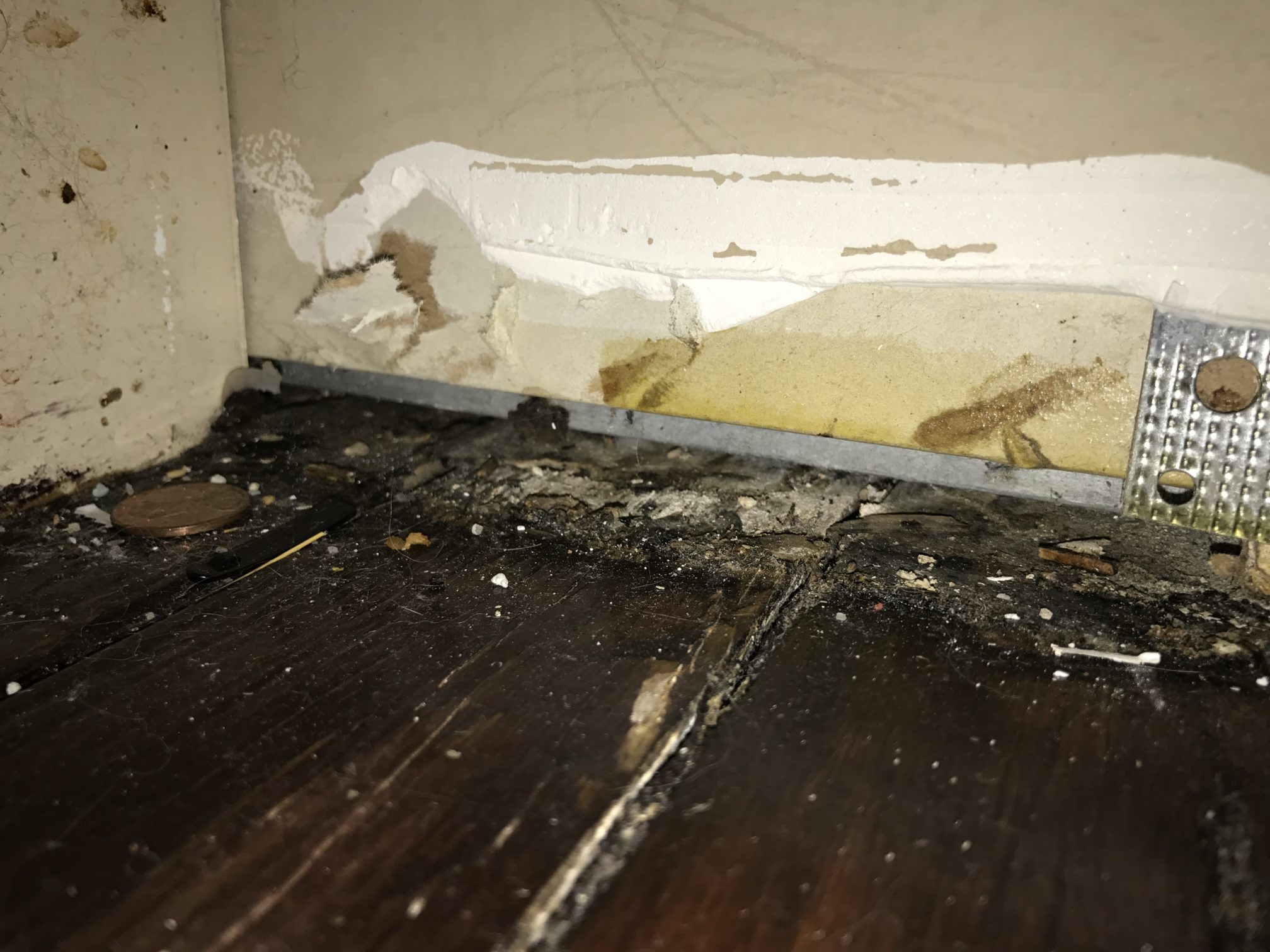Few neighborhoods offer the eye-catching structures as does West Palm Beach’s historic district of Grandview Heights. Homes built prior to the 1930’s often boast beauty and curb appeal unlike what you would find in more modern construction. The downside is that hidden damage isn’t always easy to find, especially a slow water leak that allows mold to erode the home from the top down. This is the case of how a bathroom leak destroyed a kitchen.
Dwelling: Single Family
Category: Water Leak, Mold
Location: Guest bathroom (upstairs), Kitchen (downstairs)
The victim in our most recent case bought his house nearly three years ago – a beautifully remodeled Spanish style single family home built in 1925. It wasn’t long ago that the victim noticed a stain on the ceiling of his kitchen, right above the sink. He’d thought it was an old water stain that he’d simply missed and that the previous owners went over with a thin coat of paint. Our homeowner isn’t one to take chances with his half million dollar investment, however, so he called his friend who works in the home construction industry.
After a quick social visit for the sake of seeing the damage first hand, they both decided it might be best to bring in a mitigation company to make sure it’s old damage and not current.
Nate, the resident mold specialist, lead inspector and owner of Mammoth, is assigned to the case.
He couldn’t help but admire the layout and beauty of this historic home as he walked to the front door. Over almost 20 years, and thanks to many upgrades plus one expansion, this property has risen in value from just under $144,000 in 1997 to nearly $500,000 when the current owner bought it in 2014.
Nate walked through the foyer towards the back of the house. The kitchen is to the right, halfway towards the back. He saw the offending water stain and immediately reached into his bag of gadgets, bringing out his moisture meter. He pointed it towards the affected area and called to the homeowner, “You may want to come see this. You see those purple areas surrounded by orange on the screen?”.
“Sure do”, he said. “What’s that mean?”
“That indicates a difference in temperature. In other words, it’s wet. You have a water leak somewhere up there.”
“Well, that would have to be the bathroom I reckon. It’s directly above us.”
“Let’s go take a look”, our wanna be inspector gadget said as he grabbed his bag of goodies.
Nate knows that a common problem with top down leaks like the one in this case often stem from the shower or bathtub. He quickly scanned the shower walls and base of the tub. He noticed one of the primary indicators of a plumbing leak behind a wall between the right side of the tub and the vanity – separation of the baseboard from the wall.
After gaining permission from the homeowner to perform an aggressive inspection to determine the scope of damage, our inspector removed the baseboard and cut out a small section of drywall only to have his, and the homeowner’s worst fears confirmed…
Mold.
While it’s impossible to determine the age of mold or the type just by looking at it, he had a feeling this had been going on for some time. After watching his dad clean carpets for Stanley Steamer and work his way up to water mitigation then selling Puroclean franchises several years later, and with more than 10 years in the field himself, Nate has developed what can only be described as an acute “awareness” of all things mold related.
He performed a quick check of the fittings to the nearby sink and didn’t notice anything wrong. He then turned his attention back to the shower and noticed some buildup around tub faucet. With his Spidey Senses tingling, Nate set to worth removing the faucet by rotating it counterclockwise. He was met the remains of the plastic that used to be part of the faucet clattering into the tub.
He looked up at the victim with a pained look on his face and said, “You may want to contact your insurance company and get a hygienist out here to test your whole house for mold.”
Summary: The homeowner took Nate’s advice and ordered the mold test. Extremely high levels of stachybotrys, more commonly known as “black mold” were counted by an independent lab analysis. There were more than 17,000 spores of the toxic fungus found in his home, which means it was growing for quite some time. “Stachy” as those in the industry like to call it, takes 30 days or more to grow.
The broken pieces of plastic was a stopper that is usually wrapped around the copper piping to prevent water from running into the wall cavity as the faucet redirected it down and out into the tub. With that piece broken, water had been dripping behind the wall and down to the kitchen below. After mold testing confirmed the presence of mold in the kitchen as well, it was discovered that not only the bathroom wall, but the wood floors and walls behind and under the kitchen sink were completely rotten and infested with mold.

